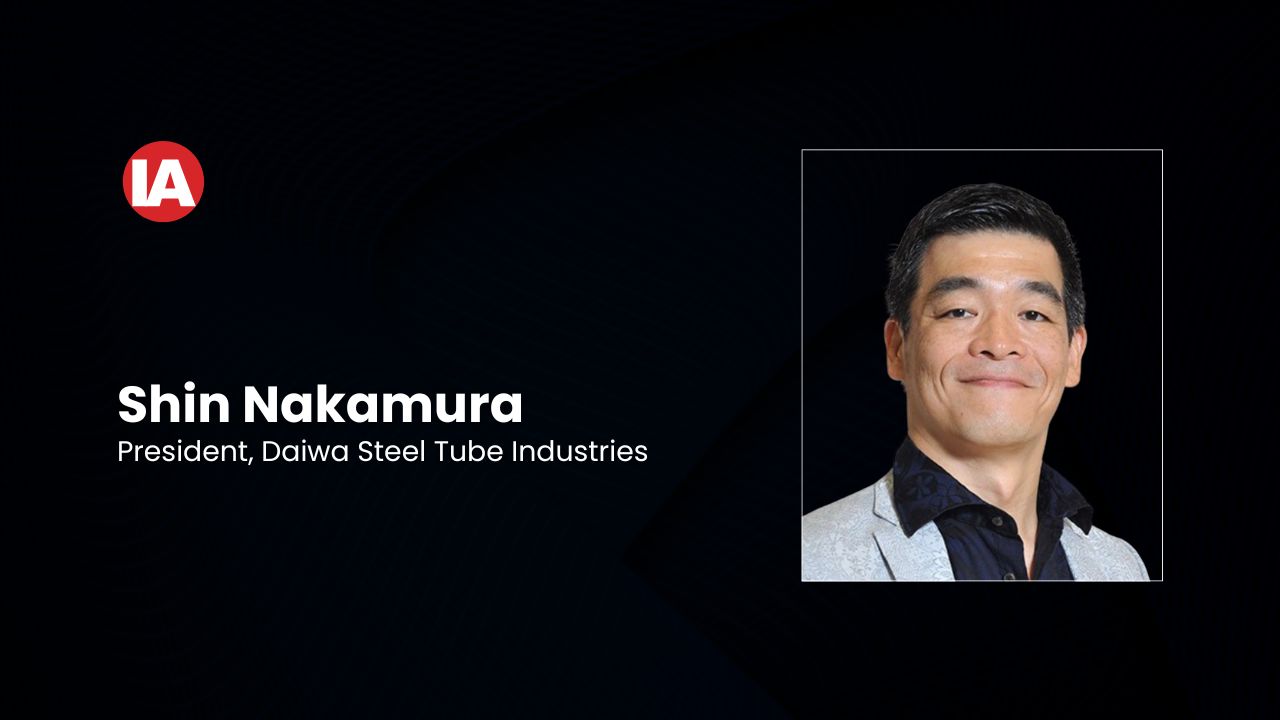May 03, 2025
Closing the AI Gap: How Can SME Manufacturers Catch up?
AI is rapidly reshaping the manufacturing landscape, but for small and medium-sized enterprises (SMEs), adoption remains a challenge. Shin Nakamura, President of Daiwa Steel Tube Industries, emphasizes that a collaborative approach between AI developers, manufacturers, and governments is essential to ensure SMEs aren't left behind in the age of intelligent automation.
![[object Object]](https://admin.industrialautomationindia.in/storage/articles/article-kv1bjXVeqBZZMu6v0h10VQmUhzNTstrkxQD7JLiO.jpg)
Collaboration between AI developers, manufacturers, and governments is more crucial than ever to ensure SMEs are not left behind, says Shin Nakamura.
AI is already transforming manufacturing as we know it, helping businesses slash operations and maintenance costs, access real-time monitoring, and automate processes on the factory floor.
Specifically, open-source AI tools like DeepSeek are introducing new levels of efficiency, which could reshape how businesses operate and manufacture products.
While large manufacturers are jumping on board and pouring billions into AI technology, smaller businesses, which are the majority of the industry, are being left behind, resulting in a widening AI adoption gap.
That's where the appeal of tools like DeepSeek comes in. They're showing significant promise in spurring on smaller businesses to close technology gaps by democratizing AI.
Although the majority of SMEs feel enthusiastic about integration, a host of obstacles still stand in the way. Currently, 69% of manufacturers report security and intellectual property concerns as a major barrier, while 65% cite a lack of AI skills, and 64% struggle with siloed data.
The question remains: Should SMEs try to catch up, and how can this be achieved in a practical, safe, and cost-effective manner?

Why SMEs need AI to stay competitive
According to a 2024 Siemens report, factory downtime can cost manufacturing SMEs up to $150,000 per hour. What's more, failures can affect the quality of raw materials, resulting in major profit losses. For small businesses, these losses can be difficult to recover from.
AI systems can predict potential issues and failures before they result in expensive breakdowns. Technology like digital twins can be used to mirror the factory floor, test out scenarios and make improvements without putting workers or machinery at risk.
Labour recruitment and retention is another major hurdle for SME manufacturers. AI provides a unique solution by taking on specialist tasks when experts cannot be used, as well as replacing repetitive and dangerous manual processes with automation.
AI systems can also be used to analyse real-time performance data, identify bottlenecks and suggest improvements that could save manufacturers valuable time and money.
Major constraints to AI adoption
Cost remains one of the major barriers to adoption, with the majority of SMEs operating on strict budgets. AI systems require expensive investments in software, infrastructural upgrades, installation, and training. Add to this ongoing support from developers, and maintenance down the line, and the costs start to pile up considerably.
Besides this, many businesses are hesitant to adopt new technology that can't be easily integrated with their existing systems and requires major overhauls and upgrades, as well as retraining of staff.
And then there's the issue of data. AI relies on quality data to deliver usable results. Currently, SMEs struggle to collect adequate data due to limited infrastructure. Without good data, AI technology cannot be accurately and holistically trained.
Lastly, regulations around the use of AI remain inconsistent, leaving manufacturers reluctant to move forward as long as the threat of compliance issues exists. Uncertainties around cybersecurity and intellectual property also need to be addressed if SMEs are going to get on board.
A collaborative approach to closing the gap
Closing the gap cannot be achieved by AI developers, manufacturers or governments alone. Rather, it's going to take a collective effort to bring SME manufacturers up to speed.
What can AI developers do?
To start with, manufacturers need to understand the benefits for their business. Hands-on workshops and courses are one way in which managers and factory staff can interact directly with these systems, address concerns, and experience the advantages first-hand.
In terms of risk management, SMEs need to be certain of the pay-off. If wages are high, but output quality is low, integrating AI systems can drastically improve profitability. If wages are low and output is high, however, costly AI investments may not seem justifiable. AI developers should add value by identifying and tackling the biggest pain points of each individual business, to make the transition worthwhile.
Developers also need to be collaborating closely with manufacturers so they can get on the same page about expectations, build trust, and address specific concerns. Besides that, developers must be prepared to customize their systems to each manufacturing environment, taking individual workflow processes and unique business requirements into account.
Alongside all this, synergy between man and machine should remain top of mind throughout. When developing any AI tool, it's crucial to bear in mind how people will interact with using it and what that means for productivity and profitability.
Cybersecurity should also be high on AI developers' priority lists. Unregulated systems can become prime targets for hackers searching for weak spots, and without the assurance that data is thoroughly protected, SMEs will remain reluctant to hand over sensitive information.
What can governments do?
There's still a way to go from the regulatory side, particularly around making regulations and guidelines around AI use in manufacturing clearer.
Incentives could also help to encourage smaller manufacturers to make the transition, including tax breaks, subsidies, and grants to support SMEs with the initial costs.

What can manufacturers do?
Before anything else, manufacturing executives should incorporate AI tools into their research, idea generation, and business development to learn how these tools work and understand the pros and cons of using them.
Manufacturing SMEs who lack the capital, or feel uncertain about full-scale AI adoption can start with 'non-disruptive' elements such as predictive analytics or inventory management, before moving on to more complex automation.
Another option is to partner with local AI startups and academic institutions to explore cost-effective AI integration strategies. This could include creating training programs to upskill workers in preparation for future adoption.
SMEs can overcome data challenges using cloud-based AI software, which provides scalable storage and data processing without costly investments in infrastructure. This way, smaller manufacturers can remain agile and start the transition on their own terms.
As the 5th and 6th industrial revolutions approach, collaboration between AI developers, manufacturers, and governments is more crucial than ever to ensure SMEs are not left behind.
References
1. https://manufacturing-today.com/news/deepseek-ai-what-it-means-for-manufacturing-and-industry-leaders/
2. https://www.weforum.org/stories/2025/02/open-source-ai-innovation-deepseek/
3. https://www.automation.com/en-us/articles/march-2025/91-percent-manufacturers-increase-investment-ai?listname=Automation%20&%20Control%20News%20&%20Articles
4. http://assets.new.siemens.com/siemens/assets/api/uuid:1b43afb5-2d07-47f7-9eb7-893fe7d0bc59/TCOD-2024_original.pdf
5. https://www.forbes.com/sites/ronschmelzer/2024/11/14/from-production-to-precision-how-ai-is-reshaping-manufacturing/
6. https://www.forbes.com/councils/forbestechcouncil/2024/03/01/digital-twins-and-their-role-in-shaping-the-future-of-manufacturing/
7. https://www.forbes.com/sites/jeroenkraaijenbrink/2022/05/24/what-is-industry-50-and-how-it-will-radically-change-your-business-strategy/
Shin Nakamura, President of Daiwa Steel Tube Industries, is an experienced manufacturing leader in Asia. Daiwa Steel Tube Industries Co., Ltd is one of the most innovative galvanised steel tube manufacturing companies in the world founded in 1932, which produces around 60,000 tons of in-line galvanised steel tubing annually for scaffolding, frames for greenhouse, roller conveyors, and other structural/mechanical tubing for various applications.
https://www.linkedin.com/in/shinichiro-nakamura-047761/
